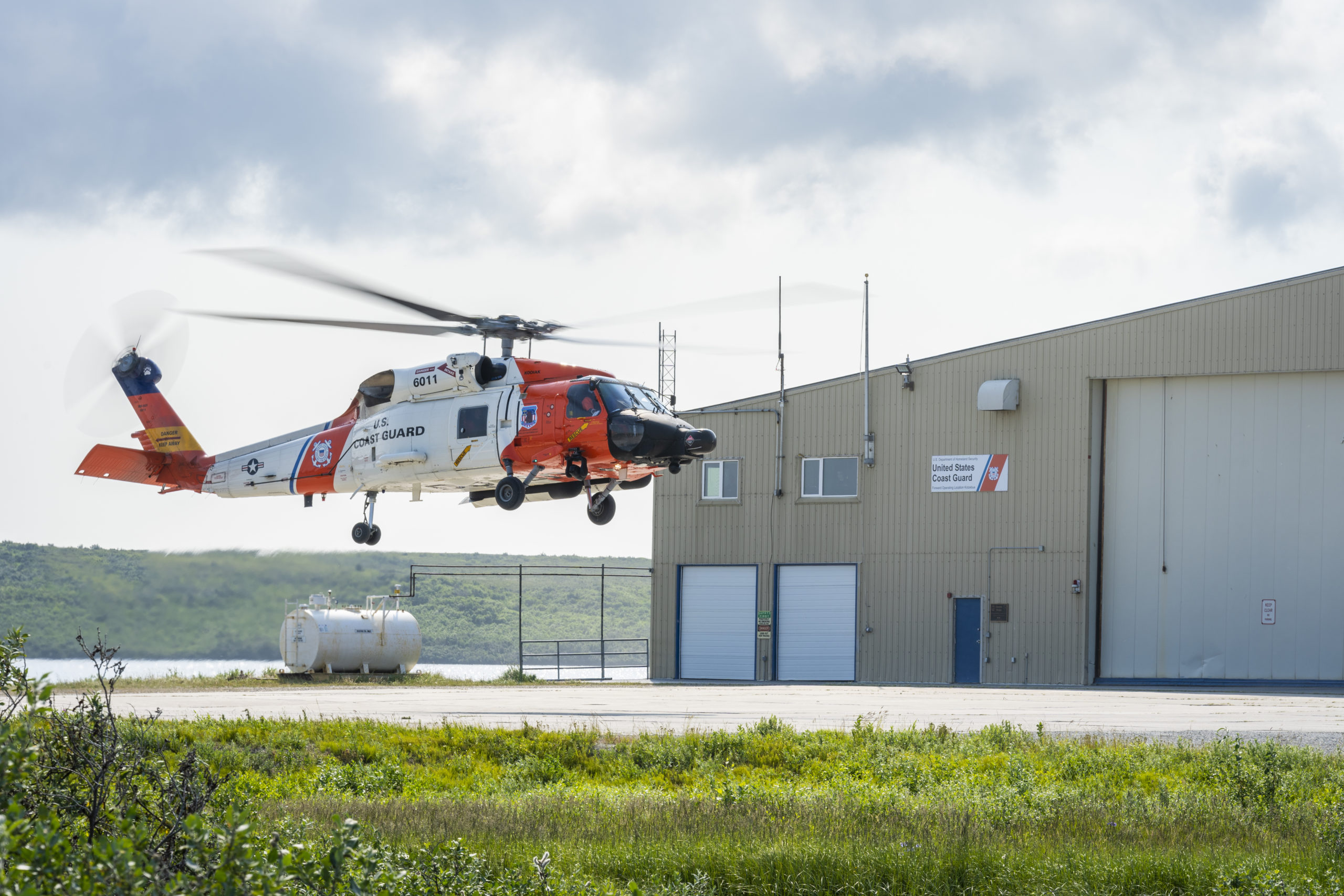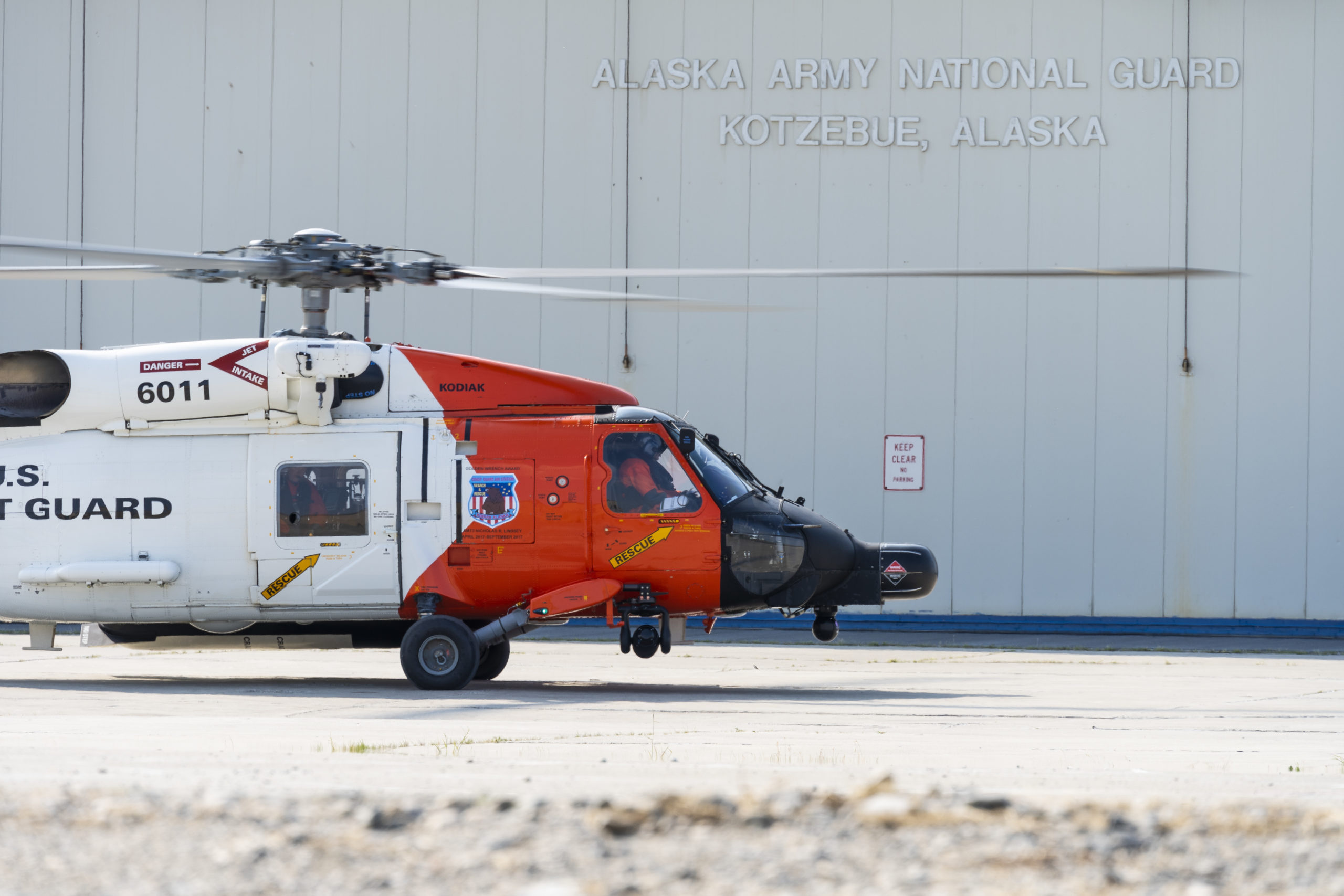US Coast Guard starts its seasonal Arctic operations from Kotzebue base
Operation Arctic Shield runs from mid-summer through October.

The U.S. Coast Guard has opened its seasonal Arctic operating site in Kotzebue, Alaska, a key milestone kicking off the 2021 season of its Arctic Shield program.
The seasonal program, which began in 2009, brings Coast Guard assets closer to the Bering Strait and North Slope, areas that are increasingly bustling with marine activities as open waters expand.
“Establishing forward operating locations helps us mitigate many of the major challenges we face when operating in the Arctic, including the environment, vast distances, and limited infrastructure,” Commander Molly Hayes, Operation Arctic Shield operational planner, said in a July 1 statement. “Pre-staging flight crews from Air Station Kodiak saves critical time and resources when conducting missions in the Arctic region.”
Opening of the seasonal Kotzebue-based operation came, coincidentally, a week after the Coast Guard rescued five hunters stranded on sea ice in the area.
That rescue was conducted by a helicopter crew flying north from the Coast Guard’s massive Kodiak base, about 700 miles southeast of Kotzebue. It was the type of operation that would have been carried out by the Kotzebue-based crews had the timing been different.
As was the case last year, this year’s Arctic Shield activities will include precautions against the spread of COVID-19. “The Coast Guard will continue to follow all CDC guidelines for COVID,” Coast Guard Petty Officer Nate Littlejohn said by email.
However, the availability of vaccines has prompted some changes. Unvaccinated personnel — rather than all personnel — must have a negative COVID test before being allowed to travel to Kotzebue, with follow-up tests required, Littlejohn said. Unvaccinated crew members must also be masked in public spaces and businesses, through “all members will follow any mask restrictions in place at the local level,” he said.
Last year, the COVID pandemic, along with some budgetary constraints, somewhat curtailed the Coast Guard’s Arctic Shield operations in communities. For example, the Coast Guard’s Marine Safety Task Force inspected 172 local bulk-fuel storage facilities last year, compared to 236 in 2019, according to Coast Guard records.
The expectation is that there will be more sites inspected this year than last year, Littlejohn said.
This summer the Coast Guard also plans to resume its voluntary inspections of gold dredges, the vessels based in Nome that are used for underwater mining. Those inspections were not conducted last year, but the Marine Safety Task Force will be in Nome in the last two weeks of July and available to do them, Littlejohn said.
Offshore gold dredging is a busy business in Nome, but it involves some dangers. Last fall, two miners were killed when their ship capsized in storm-tossed waters. In past years, divers operating in gold-dredging operations have died in accidents. And a few days ago, Nome volunteers rescued a miner from a skiff that overturned in rough waters.
While dredges below 300 gross tons — which includes most of the Nome dredging fleet — aren’t required undergo inspection, the Coast Guard offers the service as a safety precaution.
The Marine Safety Task Force has focused on commercial fishing as well, with a big push among the large Bristol Bay salmon fleet in the southeastern part of the Bering Sea region. Last year, the task force inspected 405 commercial fishing vessels, and in 2019 it inspected 475 of them, according to Coast Guard records.
Operation Arctic Shield typically runs from mid-summer to October.

